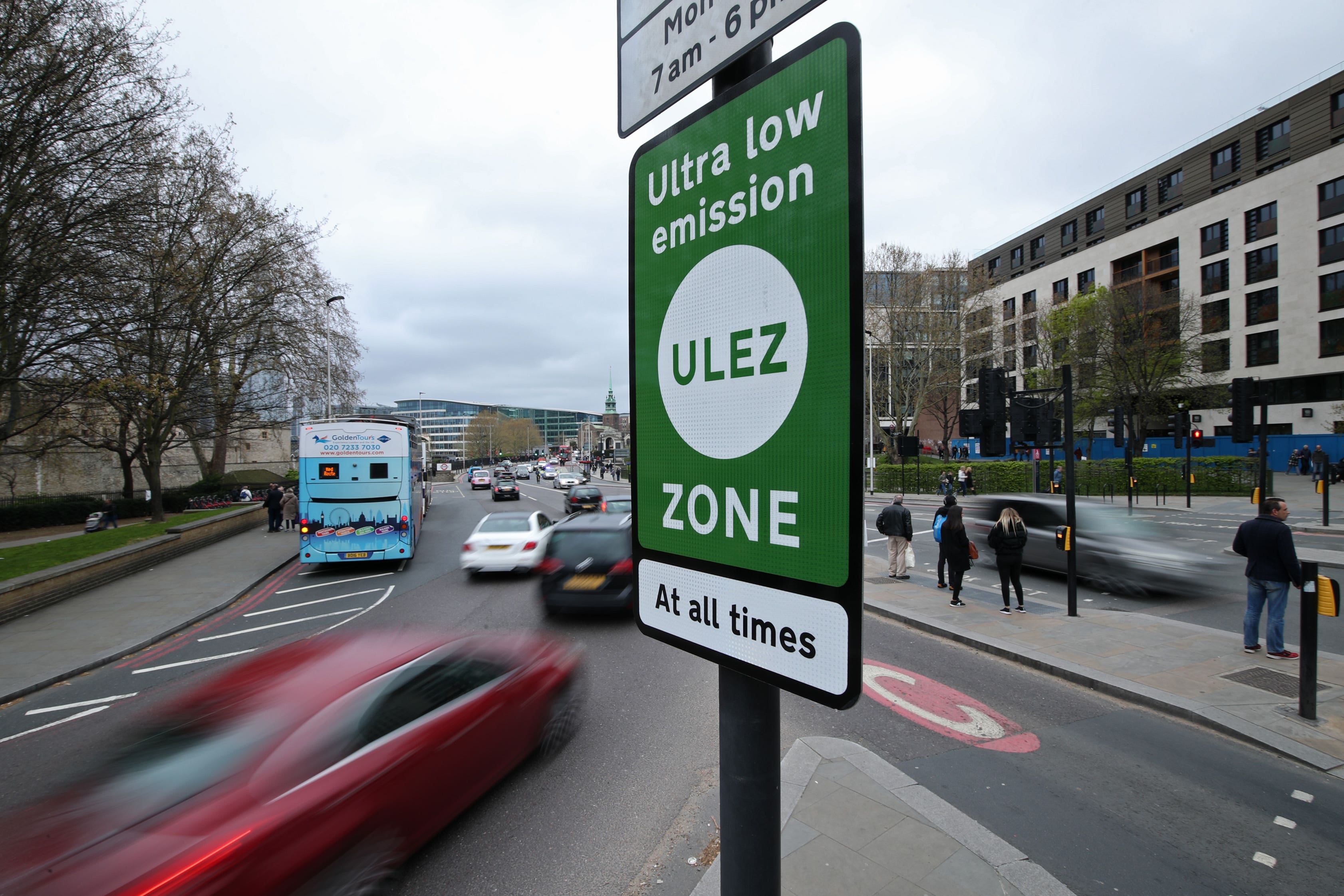Outer London car-related air pollutant 13% lower due to Ulez, City Hall says
Mayor of London Sadiq Khan extended the Ulez zone to cover all London boroughs on August 29 2023.

Levels of a harmful air pollutant from cars and vans being driven in outer London are lower than if the ultra low emission zone (Ulez) was not expanded, according to a new City Hall report.
Emissions of nitrogen oxides (NOx) from cars are 13% below a scenario where the scheme was not extended to cover the entire city, the study found. The figure is 7% for vans.
For both vehicle types, this is equivalent to removing 200,000 cars from the road for one year, the document said.
Mayor of London Sadiq Khan extended the Ulez zone from everywhere within the North and South Circular roads to cover all London boroughs on August 29 2023.
Most vehicles that do not meet minimum emissions standards and do not benefit from exemptions are required to pay a £12.50 daily fee for entering the area.
For petrol cars to meet the Ulez requirement, they must generally have been first registered after 2005.
Most diesel cars must have been registered after September 2015 to be exempt.
The report into the impact of Ulez expansion during its first six months found the proportion of compliant vehicles being used on the capital’s roads in February was 96.2%, up from 91.6% in June 2023.
The decision to expand the Ulez London-wide was a difficult one, but necessary to save lives, protect children’s lungs and help reduce the risk of Londoners developing asthma, dementia and a host of other health issues
In February 2017, when the introduction of a Toxicity Charge – a forerunner to Ulez – was announced, the figure was around 39%.
Traffic levels since Ulez expansion are broadly unchanged, the report added.
Mr Khan said: “The decision to expand the Ulez London-wide was a difficult one, but necessary to save lives, protect children’s lungs and help reduce the risk of Londoners developing asthma, dementia and a host of other health issues.
“Today’s report shows that the Ulez is working even better than expected. The expansion to outer London is already having a significant effect – driving down levels of pollution, taking old polluting cars off our roads and bringing cleaner air to millions more Londoners.”
Transport for London director of strategy Christina Calderato said the capital is “leading the way in improving air quality”.
She added: “With the greatest number of deaths attributable to air pollution occurring in outer London, it’s great to see these results since the Ulez was introduced London-wide.”